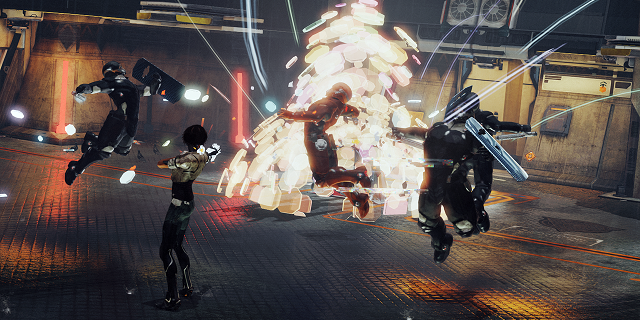
Remember Me is a worthy attempt to find its place amongst its peers in an increasingly-crowded genre. Any fan of science fiction with a cyberpunk twist will find the writing to be on par with any number of well-received novels. Unfortunately, a few design decisions mar the overall vision and promise of the world it creates.
In the mid-21st century, Europe suffered through numerous wars and natural disasters, resulting in a war-torn urban landscape. By 2084, Neo-Paris appears, structurally, to have almost fully recovered. Most of its citizens live what seems to be an almost-idyllic existence. Robots perform most menial tasks, freeing people up for more leisurely activities. However, there is a dark dichotomy to this society, with vast areas of old Paris left to rot rather than be rebuilt, those who live there doomed to spend their entire short lives surrounded by toxins, addicted to memories and with no recourse to improve their lot, if they can even remember that much about themselves.
You see, in Remember Me, the technology exists to digitize human memories,not just for instant recall of important facts or experiences, but for transfer to others. Now, an entire economy exists surrounding the sale, purchase, removal or altering of memories. Everyone has a Sensen, the device that makes such activities possible, but which also allows certain people (called memory hunters) to steal, scramble or copy your memories. Only a few memory hunters have the ability to scramble memories, and this is where you come in.
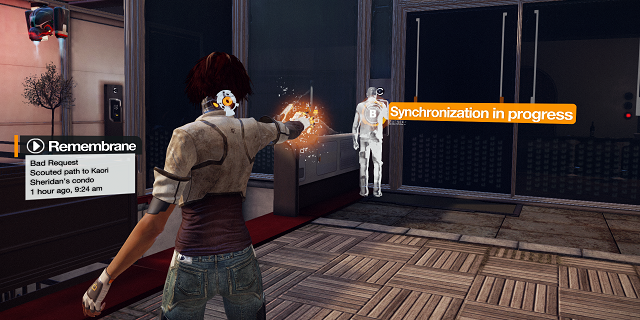
Dynamic music
If Remember Me does anything remarkably well, it’s how it handles music. The score, composed by Olivier Derivere, is excellent on its own, but when mixed with the gameplay it becomes something truly special. The music dynamically changes based on the combat, both in terms of your specific combos and the enemies reactions to those moves. It also reflects Nilin’s state of mind throughout her adventure, which is where it truly shines. – Andrew Passafiume
Nilin, one of the most famous memory hunters, and a member of the “Errorist” movement, was captured by Memorize, the company behind the commercialization of memories, and has most of her memory wiped. Thanks to a mysterious man, Edge, Nilin is able to escape from a place called La Bastille before everything is taken. Then, she tries, with Edge’s help, to find pieces of her past and hoping to restore the memories taken from her. Remember Me explores a number of gray areas with well-developed nuance, focusing on questioning Nilin’s motivations, methods, associates and shadowy past.
Despite the unusual premise, the mechanics of Remember Me will be familiar to anyone who’s played any recent action game. Most of your time will be spent either traversing the city (by jumping, crawling and climbing your way through the mostly linear environments) or fighting against a variety of enemies. These enemies range from deranged, mutated Leapers of the slums to the armored enforcers hired by Memorize, the shadowy corporation that created Sensens.
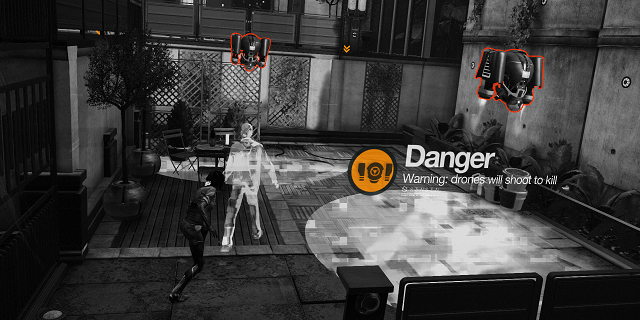
Kept at arm’s length
Remember Me drops you into a gorgeous, remarkable world and gives you absolutely no opportunities to really understand it. It is a linear game, and as a result, your chances to interact with the world outside of platforming segments are practically nonexistent. While the story doesn’t necessarily focus on the world so much as Nilin as a character and how she changes that world, there is a lot of lost potential. – Andrew Passafiume
The combat in Remember Me is based on melee combos, but it mixes things up by allowing you to customize the various blows in each combo chain by using pressens, specific attack types earned through combat. There are four different kinds of pressens: damage, recovery, cooldown and chains. Recovery pressens restore health while doing less damage, cooldown pressens reduce the cooldown time for your special attacks, and chains multiply the effects of the attack right before it. Combining these effects and attacks into more effective combos on the fly is helpful for many boss fights and other set-piece fights along the way, though over time, you’ll often find yourself relying on a simple 3-hit combo that does a ton of damage until only one enemy remains, then using your recovery combos to heal up again.
The special attacks can greatly influence the path of a fight as well, though the cooldowns definitely make timing their use important, since it is unlikely you’ll get to use any more than once in a fight. They range from disabling all enemies in the area for a few seconds to hacking enemy robots to fight for you. Dodging while attacking makes for an elegant dance of aerobics and death on the screen, which belies the problem with the combat: an iffy control scheme. There’s finicky button-press detection in Remember Me; I often found that it either wouldn’t recognize that I hit a button at all, or there would be a substantial delay before the game reacted.
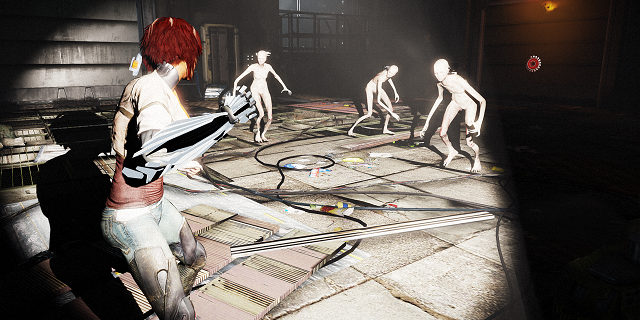
Platforming woes
Nilin is quite the acrobat, and the game presents you with plenty of opportunities to test out her abilities through various platforming sections. These segments aren’t terrible, and sometimes even present you with a few of the game’s best puzzles, yet it doesn’t feel as precise as it needs to be. And for a character whose traversal skills are seemingly unmatched, she sure does have a tough time with ladders. – Andrew Passafiume
The focus on memory isn’t relegated to the story; it’s the focus of the game’s most interesting mechanics. As a memory hunter, Nilin can steal specific memories from people, either willing or unwilling. You can then use snippets of these memories, called Remembranes, to make your way places you wouldn’t be able to otherwise, by learning security codes, using their memories of how a minefield is laid out or even finding secret pathways you would never have found otherwise.
However, Nilin also has the ability to ‘remix’ memories, changing key aspects of how an event is remembered and letting it play out in potentially very different ways. Early on, Nilin has to subdue an attacking bounty hunter by changing her memory of her husband’s treatment at a hospital. By changing certain small details, you make her think her husband was killed during treatment, which changes her entire reason for finding you, from seeking funds to continue his treatment to revenge against his murderer. Sadly, these mechanics are used sparsely.
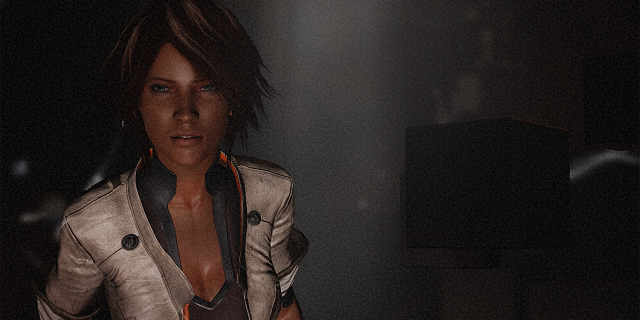
Remember Me has an interesting aesthetic that lends itself well to the setting, with breathtaking urban vistas on the horizons. However, the faces are a bit rough, and there isn’t much variety among the background NPCs. When I first started the game, I realized that the first six NPCs I saw had the same two faces and voices. Also, the camera can be awful at times. Most of the time it’s perfectly fine, but occasionally, the game takes control of it away from you, and the results are rarely anything but vexing and confusing. The soundtrack also fits the feel of the story well, though it sometimes goes from very quiet to very loud and back so abruptly that it was rather jarring at times.
The writing and themes of Remember Me are able to counter the design choices that threaten to drag it down, and I hope that Dontnod is able to continue working in this world. Future games in this narrative that fix these issues have the potential to be masterpieces.
Pros: Writing is great, memory sequences are interesting, world is stunning
Cons: Camera sometimes gets in the way, controls make combat cumbersome



















